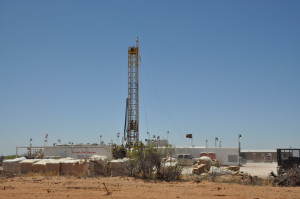 Mineral owners in the United States and Canada are not often trained in the oil and gas industry, but need expertise to help them protect and maximize their family’s mineral assets.
Mineral owners in the United States and Canada are not often trained in the oil and gas industry, but need expertise to help them protect and maximize their family’s mineral assets.
Professional minerals managers provide valuable services to their clients researching chain of title, establishing legal standings in existing oil and gas leases, negotiating new oil and gas leases, and watchdogging oil companies for payments and lease compliance.
Oil and gas minerals managers come from three primary professions: Trustees, Lawyers, and Petroleum Landmen. Although each provide similar services, they differ in their training, expertise, and pricing. To help decide which one is right one for you, we have described their unique value-add.
Some of the best mineral managers have worked as roughnecks when they were young. They have experienced the oil business from the ground up. They understand the mechanics of exploration and production. And they’re experienced in executive land operations, courthouse title work, and lease contracts. Many CEOs of major oil companies were roughnecks and then trained as lawyers or petroleum landmen.
Trustees
It’s common to inherit mineral and royalty interests from parents or grand-parents in trusts set up to be managed by bank trust officers. Trust officers provide various services, but they are essentially asset managers with strict fiduciary duties to be loyal, impartial, transparent, and accountable to you.
Often employed by banks or trust companies, trustees charge for their services in two ways: 1) By the hour, and 2) A percentage of the annual income generated by your assets. In some cases, they charge an annual % of the total value of your assets. These % charges can be very costly to mineral owners. But in return, mineral owners gain a peace of mind having a professionally licensed fiduciary manage their minerals for them.
Charging for their time, trustees offer a menu of services, each corresponding to a specific fee. Researching oil and gas production history in the mineral region might be $350 per hour, while filing and other clerical duties may cost $55 per hour. Negotiating leases may cost $450 per hour. Copies may be $0.50 per page. Answering an email or talking on the phone with your trust officer carries a specific fee.
Trustees may be compensated for their time in developing your minerals, but they are prohibited by law from earning any profits actively marketing or developing your mineral interests. Trustees are held to such a high level of standard and are subject to such severe liabilities for breach of trust that most trustees will limit themselves to managing your minerals only, and do not provide development services.
To ensure you receive the highest bonus payment and most favorable lease terms that the market will bear, trustees will seldom generate or conduct a formal bidding process like lawyers and petroleum landmen by inviting competing oil companies to lease your minerals. But they can answer the phone, research the competitive market in the region of your minerals, and negotiate a lease offer for you. With their entrepreneurial hands tied safely behind their back as a fiduciary only, they are passive managers—not proactive developers of your minerals.
Culturally, they are super conservative. Trustees are not paid so much to grow your assets, but to make sure the value of your minerals don’t diminish. As a result, they may be able to protect your minerals, but they won’t maximize your mineral value. They will be happy and feel successful if they earn you a 1% annual gross return on their watch.
The unique value proposition of trustees is a good fit for financial institutions, large family offices, and high net worth individuals seeking peace of mind, more interested in conserving their assets than growing them.
Lawyers
Similar to trustees and petroleum landmen, lawyers also charge by the hour—normally the highest rate of all three. And while fiduciary trustees are discouraged from developing the assets they manage, lawyers are not. Under a menu of services and a client agreement, lawyers may provide both management and development services.
Developing minerals, however, takes months and sometimes years to achieve a lease. Paying legal fees of $350 to $550 per hour for months is not practical for most individuals. So, it’s more common for public companies and large private agribusinesses that own tens of thousands of mineral acres—and who are subject to public legal scrutiny and shareholder oversight—to afford lawyers.
Culturally, lawyers are trained to be adversarial, not cooperative. As a result, they can run off more business than they close. They operate from fear, protecting you from liability and worst case scenarios by eliminating your risks with lengthy, burdensome contracts.
Lawyers will often hire petroleum landmen to develop and negotiate their client’s leases with oil companies, while they focus on the management side.
Petroleum Landman
Minerals managers with a petroleum landman background are usually individuals operating from their home or small office with little operating costs. As a result, they charge far less than trustees and lawyers, usually $50 to $175 per hour. Several universities provide Petroleum Land Management degrees—an inter discipline mix of business, geology, petroleum engineering, and oil and gas law.
Landmen are generally far more experienced in managing and developing oil and gas minerals than trustees and lawyers. Most are career oil men and women. It’s typical they worked for a major oil company in the land department gaining real world experience for years. As a consequence, they are trained to run title in the courthouse and negotiate oil and gas leases. They are fluent in lease amendments, ratifications, pooled unit agreements, division orders and managing day to day operations of the assets they’ve been given responsibility to manage and develop.
Landmen tend to be good communicators with people from all walks of life. Because they have low operating costs, they can customize their fees to the budget of their client. It’s not uncommon for a small mineral owner to not have the budget necessary to pay a minerals manager for the services they need to complete their chain of title, negotiate a lease offer, or transform unleased minerals into income producing assets.
Fortunately, some landmen have the flexibility to perform their development services at no or little charge—in return for earning part of the bonus and royalty income they generate for their clients. Landmen who perform these tasks at their sole cost and risk may provide these services for a premium. This way, the client who has little budget and the landman with expertise, both benefit.
Unlike trustees and lawyers, landmen are more flexible in their fees and ability to assume risk. They are culturally more entrepreneurial, so they make great developers of minerals. And with their big company training and negotiating skills—they have unique value-add qualities for clients of all sizes.



